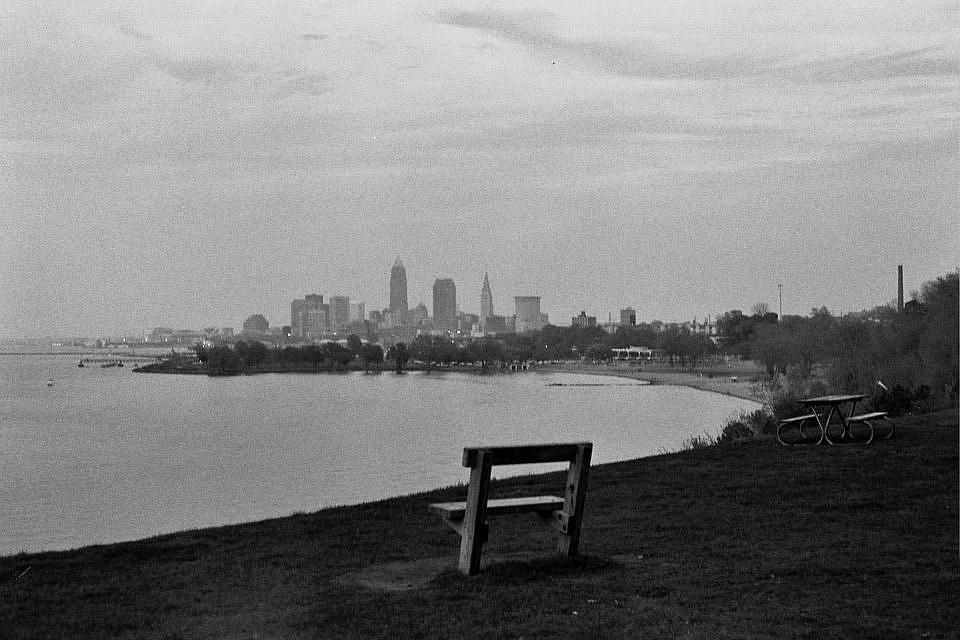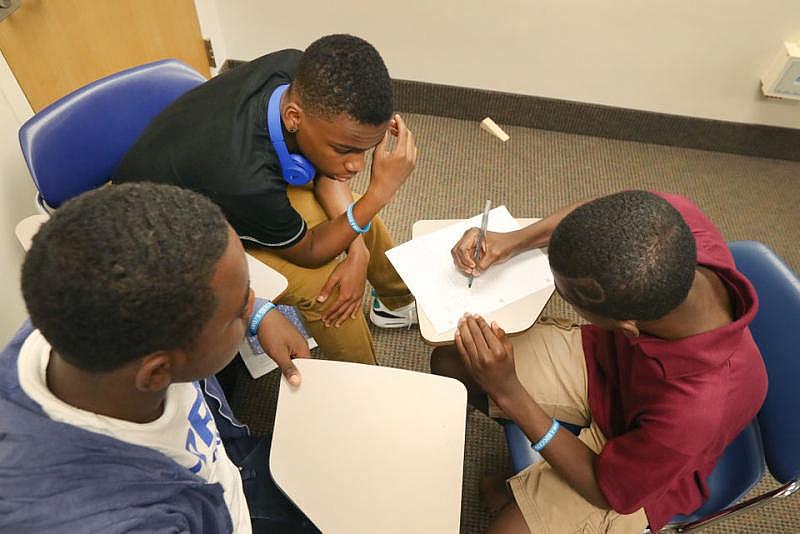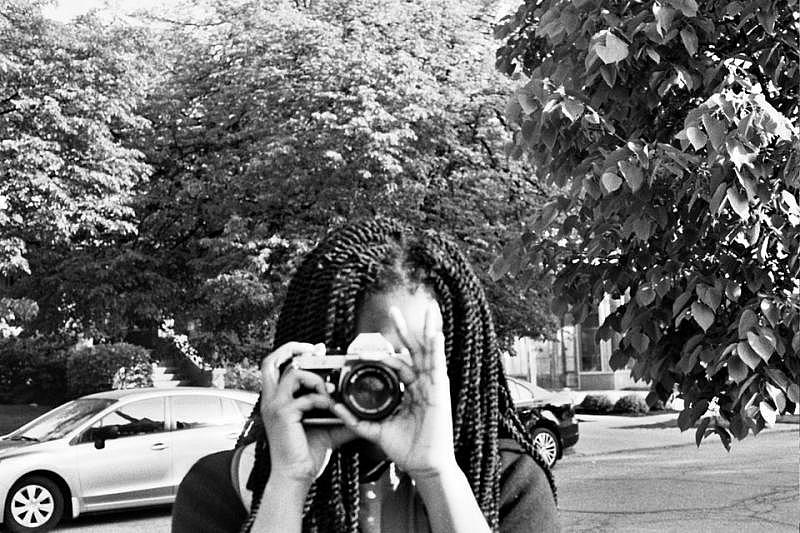We asked the Dear Cleveland participants questions along the way: What do you like best about your neighborhood? What do you like least? What would you do to change things for yourself or those around you? What stresses you out and how do you cope?
We didn’t tell them what shape their responses had to take, and we welcomed ideas for how to better ask questions, and how to present their answers to you, our readers. We promised to keep them involved in decisions about what should be communicated and what ideas and themes should be given a spotlight.
Over the past year, we’ve been impressed by their honesty, openness and creativity. We were also struck by how much loss and stress many of them have already been forced to cope with in their young lives, including the violent deaths of friends and relatives, depression and thoughts of suicide, and unstable housing and inconsistent family support.
Yet many showed an underappreciated resilience.
And often, art is what gave them a chance to make sense of it all.
Photo of Air Rodgers, center, explaining the Dear Cleveland project to a man downtown. (Photo Credit: Lisa DeJong/The Plain Dealer)
This spring and summer, we worked with three groups of young people who took up the Dear Cleveland challenge and chose different ways of expressing their ideas, thoughts and feelings: in photos, in music and by writing short stories about characters they created. While the media they chose were different, we found common threads running through the lives, and artistic work, of many of these curious and creative young adults. In the coming weeks we’ll introduce you to them and share some of their work.
A dozen young men and women worked with Refresh Collective to create beats and write lyrics for rap songs.
Pat Warner, 21, sees writing rhymes as “therapy” that helped him cope with growing up with a speech impediment and with the many losses in his life, including the death of his father at 17. “Music has always been my voice… It’s me confessing: This is who I am, the good and the bad,” he says. “Basically, I would write the things I was afraid to say.”
Six young women from our partner, Shooting Without Bullets, roamed Cleveland taking photos this summer.
Ariana “Air” Rodgers, 16, (pictured above in downtown Cleveland) suggested the overarching theme for the photographers to explore, a utopia/dystopia dichotomy, after she talked about the distinct difference in the look and feel of homes on opposite ends of her street, which runs from Glenville into the rapidly developing University Circle area.
Near the Case Western Reserve University campus, she said, homes on streets like Ashbury Avenue were “all of these nice, vintage, old houses,” while past a certain line roughly at the entrance to East Cleveland, “things start going downhill… the houses are like a more worn-out version of the ones on [the Cleveland] side.”
The idea developed organically as the participants talked about the stark differences they saw as they traversed their city. Plain Dealer photographer Lisa DeJong worked alongside the young women, who received a small stipend for their work, as they captured images and helped edit the work.
Pictured above Keion Mason, 17, works on creating a character for his short story. (Photo Credit: Chuck Crow/The Plain Dealer)
A dozen teens from the Upward Bound program, a year-round pre-college preparation program for Cleveland schools students, with the help of a veteran teacher, created characters and stories based on real-life situations.
The stories allowed them to examine the potential outcomes of taking different paths at a crossroad. Their decisions provided a window into how even bright and engaged students in Cleveland sometimes see the world in a dark way: for many, there were no positive outcomes, even when choosing what would seem like the “good” or “right” path.
Common themes popped up in the various groups: the need to be understood for who they are, not who people perceive them to be; how hard it is to set and reach goals in the face of daily obstacles, whether depression or the lack of transportation; and a kind of mercurial love-hate relationship with a city that that they feel bound to but also hasn’t presented them with enough opportunities to thrive.
After you have had a chance to learn about the work of these three groups of teens and young adults, we hope that others like them who have something to say might join in by sharing their own verses, photos or writing. We’ll offer an opportunity to write a verse to go along with a “hook” students, helped create. Or, to send in photos to add to a gallery of images that capture Cleveland through the eyes of its youth, you can send them in an email to dearcleveland@gmail.com or post them on Instagram with #DearCleveland.
Adora Ezepue, 15, practices with her 35 mm film camera in University Circle. (Photo Credit: Isadora Waller)
Working on this project, we came to recognize the need to more consistently give space to the voices of black and brown youth in our city. We often heard from young people that media coverage portrays them mostly at the extremes, as criminals or victims.
Not enough space, they say, is given to stories of what their daily life looks like, from what makes them laugh to the reality of learning to navigate racism.
“You go through different things that everybody else goes through, but you can’t do certain things without being judged,” 15-year-old Adora Ezepue, a sophomore at Campus International High School, explained. “It doesn’t feel great but I’ve kind of grown accustomed to it. I can push it aside and not let it affect my life as much.”
While Dear Cleveland is only a small step in correcting this imbalance, we hope that it will open a window onto the lives of young people in the area, and inspire more listening, less judgment and greater understanding.







